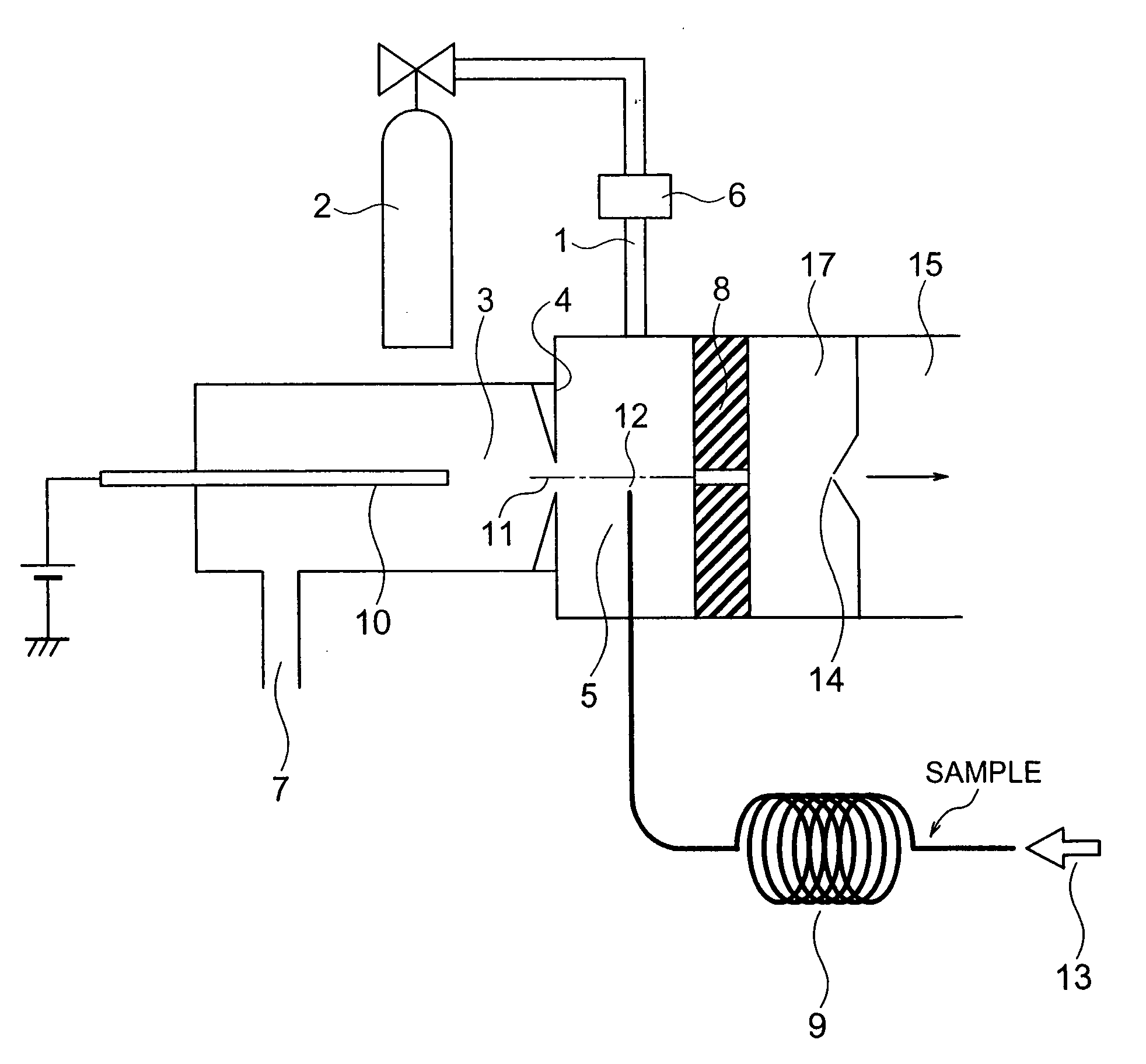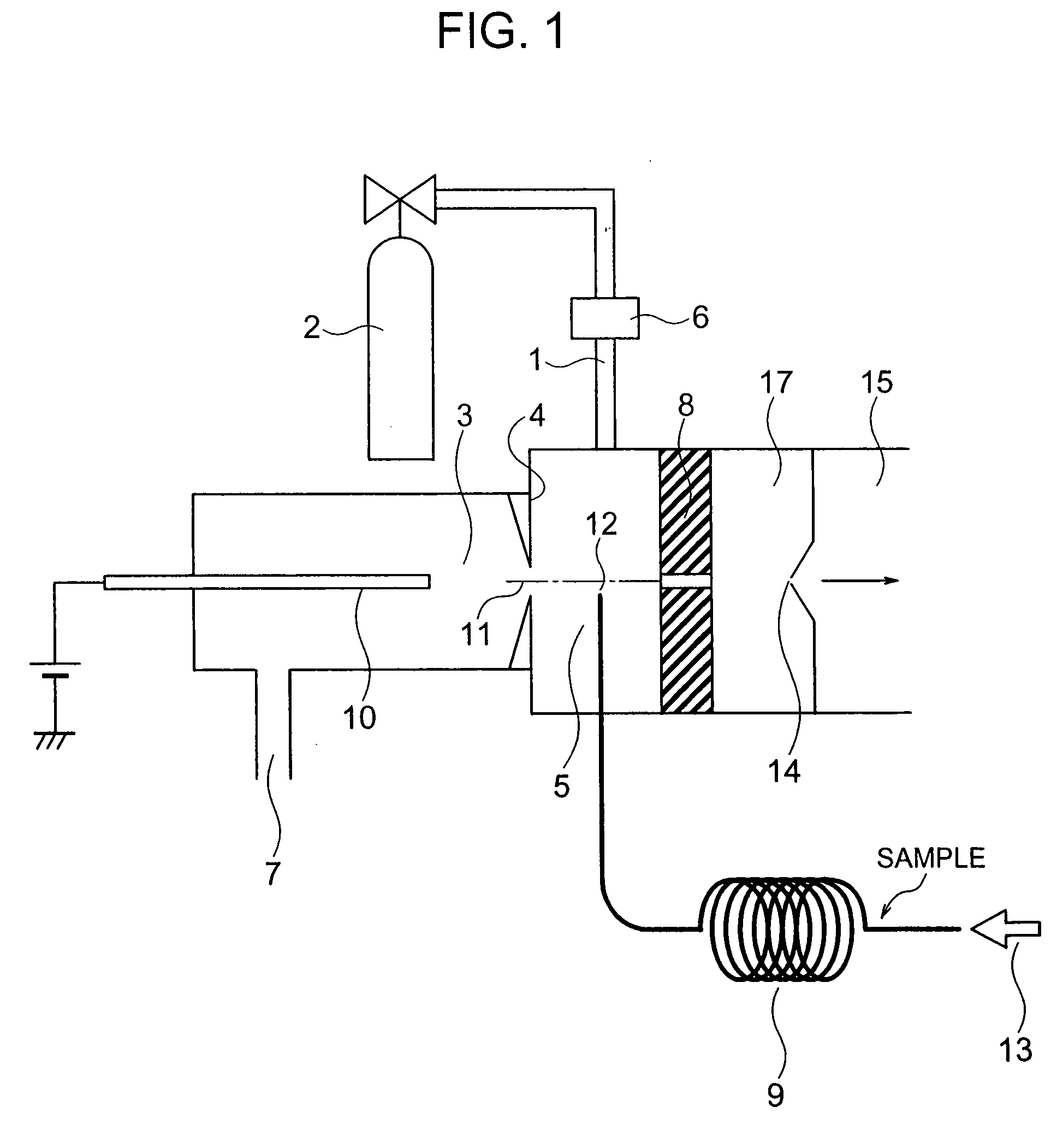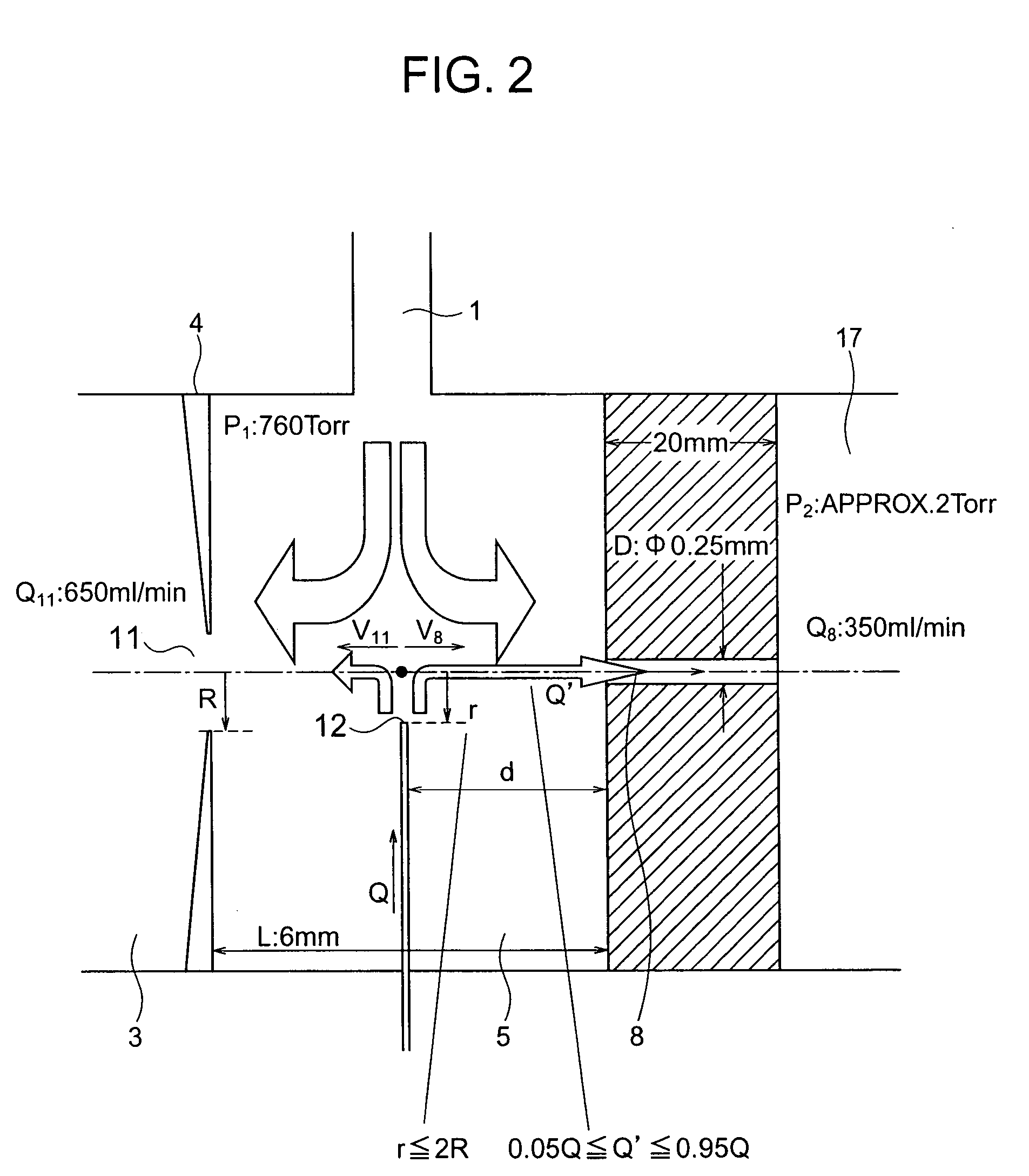Mass chromatograph
a mass chromatograph and mass spectrometry technology, applied in the field of atmospheric pressure chemical ionization mass spectrometry, can solve the problems of contaminated ion sources, insufficient consideration of dilution in prior art technologies, and contamination of ion sources, so as to achieve easy contamination and high sensitivity analysis
- Summary
- Abstract
- Description
- Claims
- Application Information
AI Technical Summary
Benefits of technology
Problems solved by technology
Method used
Image
Examples
first embodiment
[0038]FIG. 1 is a sectional view showing a construction of a mass spectrometer according to a first embodiment of the invention. This mass spectrometer (GC / APCI / MS) is a high sensitivity apparatus that ionizes sample molecules (sample gas) separated by a GC column by an APCI source and analyzes the mass.
[0039] A first ionization portion 3 and a second ionization portion 5 are separated from each other by a first partition (lead-out electrode 4) having a primary ion introduction aperture 11 through which a primary ion passes. The second ionization portion 5 is an area that is interposed by the first partition and a second partition that has a sample ion movement aperture 8 through which a sample ion of a sample gas generated by the reaction between the sample molecule and the primary ion (hereinafter called “ion-molecule reaction”) inside the second ionization portion 5 passes.
[0040] The mass spectrometer according to the first embodiment includes the first ionization portion 3, th...
second embodiment
[0092]FIG. 5 is a sectional view showing a construction of a mass spectrometer according to the second embodiment of the invention. The construction of the second embodiment is effective for executing positive ionization of the sample gas.
[0093] In the second embodiment, the sample gas introduced from the aperture 12 at the end of the GC column 9 is introduced into a corona discharge portion (area indicated by dotted line in FIG. 2). The needle electrode 10 is arranged inside the ionization portion 18 and the primary ion generation gas introduction piping 1 is connected at a position far from the sample ion movement aperture 8 (position on the root side of needle electrode 10) on the opposite side to the tip end of the needle electrode 10 inside the ionization portion 18. The primary ion generation gas from the gas cylinder 2 is introduced through the primary ion generation gas introduction piping 1 into the ionization portion 18 while its flow rate is regulated by the mass flow co...
third embodiment
[0101]FIG. 6 is a sectional view showing a construction of a mass spectrometer according to the third embodiment of the invention. The construction of the third embodiment is effective for executing positive ionization of the sample components having a small reaction rate constant in the ionization reaction.
[0102] The difference of the third embodiment from the first embodiment resides in the arrangement position of the center of the aperture 12 at the end of the GC column 9, the arrangement position of the primary ion generation gas introduction piping 1 and exhausting of the gas from an ion passage aperture 20 in place of the primary ion generation gas exhaust piping 7. In the third embodiment, the sample gas introduced from the aperture 12 at the end of the GC column 9 is introduced into the corona discharge portion (area indicated by dotted line in FIG. 6) in the same way as in the second embodiment.
[0103] The ionization portion 18′ in which the needle electrode 10 is arranged...
PUM
| Property | Measurement | Unit |
|---|---|---|
| flow rate | aaaaa | aaaaa |
| flow rate | aaaaa | aaaaa |
| diameter | aaaaa | aaaaa |
Abstract
Description
Claims
Application Information
 Login to View More
Login to View More - R&D
- Intellectual Property
- Life Sciences
- Materials
- Tech Scout
- Unparalleled Data Quality
- Higher Quality Content
- 60% Fewer Hallucinations
Browse by: Latest US Patents, China's latest patents, Technical Efficacy Thesaurus, Application Domain, Technology Topic, Popular Technical Reports.
© 2025 PatSnap. All rights reserved.Legal|Privacy policy|Modern Slavery Act Transparency Statement|Sitemap|About US| Contact US: help@patsnap.com



